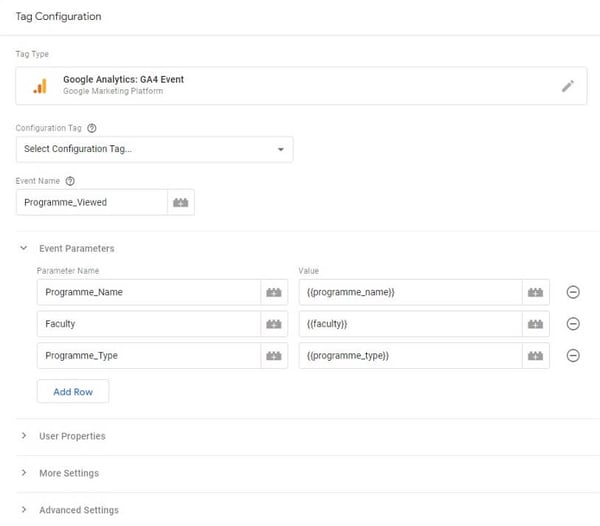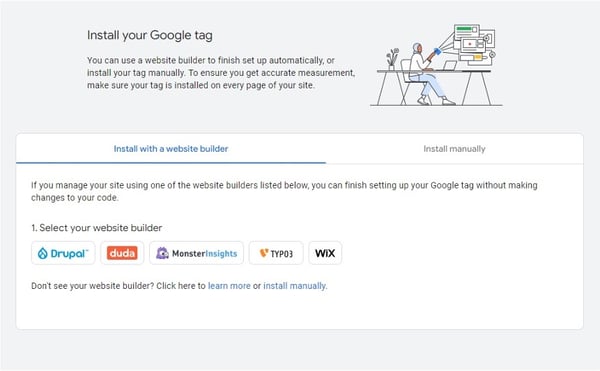- SERVICES
- HIGHER EDUCATION MARKETING
- ENGAGEMENT & ENROLLMENT MANAGEMENT
- STUDENT RECRUITMENT AGENCIES
- PROFESSIONAL EDUCATION & TRAINING
- WHO WE ARE
WHO WE ARE
Learn more about Keystone Education Group, including our leadership structure, why choose Keystone as your educational partner, and company press releases.
QUICK LINKS
- RESOURCES
RESOURCES
Find a range of helpful resources to help with your educational marketing. From on-demand webinars, reports & data, to customer testimonials and our downloadable media kit.
QUICK LINKS
- NEWS
- REQUEST A CALL

- Keystone Higher Education News
- Preparing Your Higher Ed Institution for Google Analytics 4
Much has been said about Google Analytics 4 (GA4) in the marketing world, as marketers get to grips with the newest iteration of the traffic and web analytics tool, released in late 2020.
So why exactly is "GA4" the buzzword of the moment almost two years later, and what will this new version mean for tracking users on your institution's website?
In this article, we look at key GA4 features and updates from the perspective of those working in higher education marketing.
Why are we talking about this now?
Out with the old and in with the new! From 1 July 2023, Google Analytics 4 will replace the current system, Universal Analytics. While the date may seem like it is still a long way away, the data you have captured over the past months and years will not be transferred to Universal Analytics.
Universal Analytics data will be available approximately until the end of 2023, but to draw effective year-on-year comparisons and trends, it is better to make the switch to GA4 now and build up this data in advance. After 1 July, Universal Analytics will effectively be switched off.
Webinar on Demand: Preparing for Google Analytics 4
Jack Taylor, Head of Data and Optimization at postgraduate marketing specialists FindAUniversity, said:
"I recommend making the switch to over to GA4 as soon as possible. You can upgrade your Universal Analytics account using the upgrade wizard in only a couple of minutes.
“If you are fully customizing and configuring your GA4 account, the time required will depend on the size of your institution and what you need to track. It could take several weeks or longer to do."
What are the newest features of GA4?
GA4 is Google’s solution to consumer privacy concerns and the use of cookies. It will also help institutions correctly attribute their traffic across different devices. I.e., via an app or via Google itself.
User tracking will now be based on an ‘events model’. Instead of tying website hits together with session-based data, it will record every individual interaction.
For example, with Universal Analytics, if a prospective student clicked on your website, and then decided to leave their computer for an hour, before coming back and clicking a second time on your university site, that engagement would have been recorded as one hour despite the user not interacting with your site for the full hour.
GA4 will measure each individual interaction – so the click at the beginning of the hour, and the click at the end. They will be measured as ‘events’.
With Universal Analytics, we were used to seeing bounce rate and average time on site as measures, however with GA4, they have been replaced with engagement rate and average engagement rate.
An ‘engaged session’ with GA4, is a session that lasts more than 10 seconds or has triggered more than one event. GA4 will also measure ‘active users’, i.e. users with an engaged session (instead of ‘total users’).
How can it improve the student recruitment process?
GA4 gives you greater granularity and data quality, which allows those working at institutions to better understand student user behavior.
The customizable events feature gives more scope to understand your audience and track conversions.

What it looks like creating a new 'event' on Google Analytics 4
Events will be an important measurement metric
Google Analytics 4 will now measure ‘events’. GA4 says:
“An event allows you to measure a distinct user interaction on a website or app. For example, loading a page, clicking a link, and completing a purchase are all interactions you can measure with events.”
By default, GA4 will collect over 40 events. The power of GA4 however, is that it allows marketers to create custom events to track anything.
With Universal Analytics, users could only collect an ‘action’, ‘label’ and ‘category’ interaction. With GA4, you can collect up to 25 parameters – describing the who, what, where, when and how the event happened.
For example, we could collect an event called Applied for Programme, which could have parameters including, Department Name, Programme Type and Mode of Study.
During the webinar, "Preparing for Google Analytics 4", Janet Jardine, senior marketing officer spoke of her experiences setting up GA4 at the University of Glasgow.
“Our web team sets up the event tracking for us, it is things like measuring how many users are registering for events or downloading a prospectus.
“But the big ‘events’ for us, are the ‘apply now’ button, and another event is if a user completes an application with us,” she said.
Customization
Most marketing teams will have used and will still be using Universal Analytics to measure their traffic and data, and in comparison to Universal Analytics, Google Analytics 4 is more customizable to find the exact data that you need to measure.

Example of the Google Analytics 4 interface
One specific example of this, is within GA4’s reports section. Although on the GA4 dashboard, the number of reports may look less than what users are used to seeing on Universal Analytics, you can customize and add reports to meet your specific needs.
The challenges of implementing Google Analytics 4
Overall, it may be initially more challenging to navigate Google Analytics 4 than Universal Analytics, with a bit of a learning curve ahead for new users. However, once you have had a chance to test its new features and get used to the layout of the new dashboards, GA4 will save time in the long run with its extensive tracking and optimization.
The administration side of GA4 can also seem slightly intimidating to look at initially. However, have a look in the settings and options section of the platform and play around with what tracking and filtering works best for your goals.
We have also put together two step-by-step guides – one on how to get the most of its features as a marketer in higher ed, and one to help you implement GA4 in your organization and set up its features to suit you.
More about:
Related Tags
Just For You
Top Picks
Higher Ed Chats Podcast
Listen to the latest episodes of our Higher Ed Chats Podcast. Hear from Higher Ed thought-leaders from around the world!
The Keystone Awards 2026:
Nominate your institution or a student

Recognize your your university, team, colleagues and students for a Keystone Award!
Subscribe
to get the latest news and updates
-Oct-05-2022-09-19-14-01-AM.png?width=600&name=Untitled%20design%20(1)-Oct-05-2022-09-19-14-01-AM.png)


